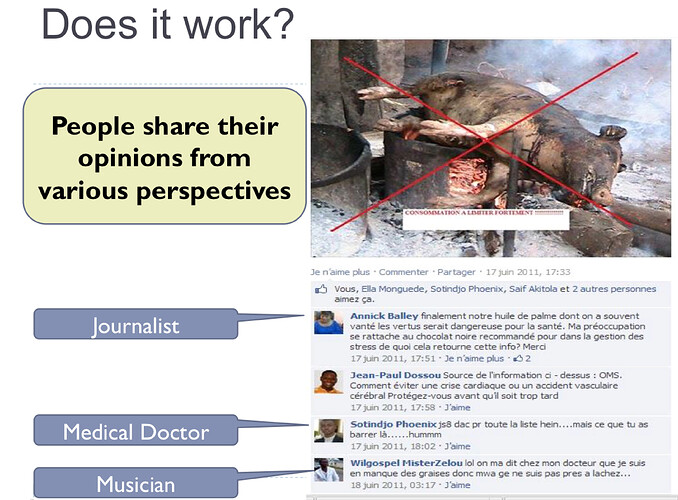I’m Jean-Paul Dossou, from Benin in West-Africa.
Some wise people do perceive already the unsustainability of the current health care provision organization in western developped countries, but this is the dreamed model, that developping countries are running to. Is it possible to “jump a generation” in the organization of health care provision in developping countries? This is the underlying question of the “modern” collaborative care expriences we are going to share in this post about Coeur d’Or.
As a short backgrund, Cardiovascular diseases (CVD) induce yearly about 17 millions of deaths. Over 75% of those deaths occur in LMICs where risk factors are highly prevalent and the health system is poorly adapted to deal with chronicle and highly expensive emergent conditions. In Benin, the prevalence of high blood pressure is about 30%. Health promotion on this poorly funded issue, in this limited resource setting, requires innovative communication tools. To this end, Cœur d’Or (Redirecting... ) was created in 2011, to test the feasibility of using social media for providing promotional and preventive care against CVD in Benin, in a collaborative way.
We aim here to present briefly Cœur d’Or , and some lessons learned so far. We use a case study approach based on participatory observation, (in) formal in-depth interviews with different stakeholders and documents reviews on the solution. Social media analytics tools are used for the quantitative analysis of the profiles of the solution users and activity.
Cœur d’Or is an open Facebook group of 21615 members, mainly from Benin (West Africa). It runs as a tool of keeping in touch with a huge number of the community members, allowing for a double-sense communication, spreading cutting-edge information on CVDs and building a community-based leadership on CVD. The targets are young, mainly from urban and semi-urban areas, educated and active on social media. They connect to the platform using mainly smartphones. A wide range of subjects related to CVDs and Non-Communicable Diseases are discussed from several perspectives. Members can initiate a discussion stream, receive inputs from several profiles of members and get a summary from a medical expert based on key evidence-based prevention measures against CVD.
The group stands also as a social mobilization and community participation tools influencing the agenda setting at the national level. It is currently a member of the Multisectorial National Committee against NCDs in Benin, as a leading actor supporting the organization of national campaigns against CVD in Benin each year since 2011. Using its online critical mass and its growing network in traditional media and several public and private institutions, the group is capable of mobilizing each year since 2013 material and financial resources up to 25,000 € to organize offline activities such as a walk (about 5000 participants each year), risk factors screening, interactive conferences during the world heart day. All those activities help at reaching people that are not active online and are done with the leadership of members that are not health workers.
The rapid development of telecommunications improves the access of a growing number of people to Internet and social media. A critical mass of the group improves its political influence and creates a web tool that can help for a viral diffusion.
Cœur d’Or demonstrates the feasibility of using social media as an innovative approach for offering promotional and preventive care on health issues in sub-Saharan Africa. It opens new windows for thinking and dreaming again for an effective community participation in all its dimensions in the global south.
Thank you very much for your comments and questions.
